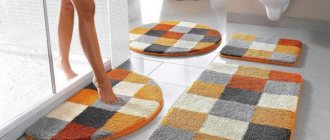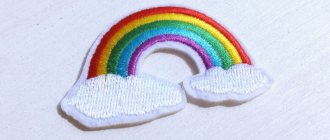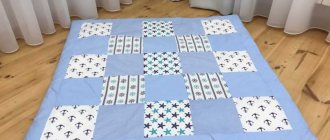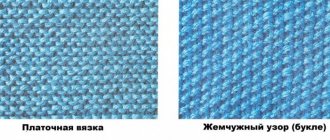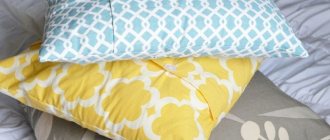Today, a jute carpet is a practical and original alternative to expensive products - many consumers have realized this. It will decorate any interior and also create an atmosphere of coziness and comfort in your home. This article will discuss issues related to jute carpet.
Features of the material
Jute is a plant that grows in North America, Asia and Africa (it is not found in Russia). It is a coarse fiber that is obtained by twisting. The fibers of this plant are widely used for the manufacture of various products: ropes, ropes, fabrics, bags for storing and transporting food. The main suppliers of jute are India and Bangladesh. The raw materials produce durable, hygroscopic products that can withstand any weather conditions without collapsing from moisture and dampness.
This popularity of this material is explained by many factors:
- Safety. Jute is resistant to any chemicals and pesticides.
- Cheapness. The material is available and has a very low cost.
- Strength. The fibers contain a special binding substance – lignin. It is thanks to him that jute is very strong and durable.
In addition, products made from jute fibers have a unique and very valuable property: if the room humidity is very high, the material absorbs drops of water (inside the fibers), but moisture does not penetrate to the underside of the product. Later, excess moisture simply evaporates. This unusual and extremely useful property only increases the interest of manufacturers in jute. Carpet manufacturers were no exception.
The video below covers in detail the questions of how to choose so as not to make a mistake, where it is sold, how much jute costs, and also talks about the thickness, parameters of jute, etc.
Let's consider the main features of products made from such exotic material:
- Originality . If you have an unusual rug made of jute fibers in your home, it will attract attention. This product will be an excellent decoration for a room in an oriental or country style. The pleasant natural color and natural shine of the material make the product very neat and attractive in appearance.
- The variety of shapes of such a rug will also be an additional advantage, since you can choose a product that is ideal for your interior. In addition, jute goes well with more conventional materials for creating carpets. Therefore, more and more combined models are appearing on the modern market.
- Naturalness . Since jute is a 100% natural plant fiber, products made from it are environmentally friendly and hypoallergenic. This factor is especially important for those who care about their own health and the environment.
- Environmental friendliness - jute is 100% natural material of plant origin.
- Durability . As noted earlier, jute is an incredibly durable raw material. The product made from it will be resistant to mechanical stress and will retain its original appearance for many years.
- Hygroscopicity . Thanks to this property, jute rugs can even be placed in the bathroom. They will not slip, will not lose their shape from water, and will not accumulate excess moisture. This means that there is no need to worry about the formation of fungus or mold inside the fibers.
- Therapeutic effect. Since the threads of the exotic plant are very hard, products made from them will be excellent materials for foot massage. There are many important points on the feet that are responsible for the health of internal organs. Just walk on the mat and get a healing effect.
- Low cost. The material is available, cheap, and the price of carpets is also quite reasonable. This means that everyone can afford such an environmentally friendly, safe, useful and unusual product - regardless of their financial situation.
- Versatility . A jute rug will give your interior a complete look and make it more original. By the way, such a product is used not only for the floor, but also for decorating walls. Place the product on the floor under your workplace, in the kitchen, hallway or bathroom.
The product will fit equally organically into any room - of course, if we are not talking about an overly luxurious style (then the jute rug will look rustic). The product holds its shape perfectly, does not slip or wrinkle underfoot, so it is often used as a mat for yoga or other physical exercises.
It is worth noting that jute threads are characterized by significant rigidity. If this is a drawback for you, but you still want to purchase the product, there is a simple solution. Modern stores offer many options for combined products.
You can choose a carpet whose top part is made of wool (artificial or natural), and the back side is made of jute. So the price of the rug becomes significantly lower. The product acquires the beneficial properties of both materials at once. It does not slip on the floor and does not accumulate moisture (thanks to jute) and is soft thanks to wool fibers.
Features of the material
Jute is a plant that grows in North America, Asia and Africa (it is not found in Russia). The fibers of this plant are widely used for the manufacture of various products: ropes, ropes, fabrics, bags for storing and transporting food. This popularity of this material is explained by many factors:
- Safety. Jute is resistant to any chemicals and pesticides.
- Cheapness. The material is available and has a very low cost.
- Strength. The fibers contain a special binding substance – lignin. It is thanks to him that jute is very strong and durable.
In addition, products made from jute fibers have a unique and very valuable property: if the room humidity is very high, the material absorbs drops of water (inside the fibers), but moisture does not penetrate to the underside of the product. Later, excess moisture simply evaporates. This unusual and extremely useful property only increases the interest of manufacturers in jute. Carpet manufacturers were no exception.
Let's consider the main features of products made from such exotic material:
Originality
If you have an unusual rug made of jute fibers in your home, it will attract attention. This product will be an excellent decoration for a room in an oriental or country style.
The pleasant natural color and natural shine of the material make the product very neat and attractive in appearance.
The variety of shapes of such a rug will also be an additional advantage, since you can choose a product that is ideal for your interior. In addition, jute goes well with more conventional materials for creating carpets. Therefore, more and more combined models are appearing on the modern market.
Naturalness. Since jute is a 100% natural plant fiber, products made from it are environmentally friendly and hypoallergenic. This factor is especially important for those who care about their own health and the environment.
Durability. As noted earlier, jute is an incredibly durable raw material. The product made from it will be resistant to mechanical stress and will retain its original appearance for many years.
- Hygroscopicity. Thanks to this property, jute rugs can even be placed in the bathroom. They will not slip, will not lose their shape from water, and will not accumulate excess moisture. This means that there is no need to worry about the formation of fungus or mold inside the fibers.
- Therapeutic effect. Since the threads of the exotic plant are very hard, products made from them will be excellent materials for foot massage. There are many important points on the feet that are responsible for the health of internal organs. Just walk on the mat and get a healing effect.
- Low cost. The material is available, cheap, and the price of carpets is also quite reasonable. This means that everyone can afford such an environmentally friendly, safe, useful and unusual product - regardless of their financial situation.
- Versatility. A jute rug will give your interior a complete look and make it more original. By the way, such a product is used not only for the floor, but also for decorating walls. Place the product on the floor under your workplace, in the kitchen, hallway or bathroom.
The product will fit equally organically into any room - of course, if we are not talking about an overly luxurious style (then the jute rug will look rustic). The product holds its shape perfectly, does not slip or wrinkle underfoot, so it is often used as a mat for yoga or other physical exercises.
You can choose a carpet whose top part is made of wool (artificial or natural), and the back side is made of jute. So the price of the rug becomes significantly lower. The product acquires the beneficial properties of both materials at once. It does not slip on the floor and does not accumulate moisture (thanks to jute) and is soft thanks to wool fibers.
Placement in the interior
At all times, carpets were considered the best floor coverings; they did an excellent job of insulating and giving the room an atmosphere of comfort and coziness. In modern conditions, the need to perform the function of preserving heat has largely faded into the background; now carpets are increasingly used for decoration.
Inexpensive and practical jute carpets and mats, due to their natural component, fit perfectly into almost any interior style. Such products will look especially harmonious in rooms decorated in Provence, country styles or the increasingly popular eco style.
Original rugs knitted from jute thread may appeal to romantics or fans of oriental style.
For the living room or bedroom, round or oval rugs knitted from jute twine are best suited. These can be either single-color openwork products or solid multi-color samples. It all depends on your preferences and the general style of the room in which the carpet will be placed. Small jute rugs and rectangular mats will look great in the hallway, kitchen and even bathroom.
Rope carpets hold their shape well and do not crumple underfoot, so they will come in handy in common areas that are most frequently visited by all family members.
If you are put off by the cheapness of the product, and at the same time you think that a jute carpet does not look very good in interior design, you can purchase a wool carpet with a jute base. Thanks to the irreplaceable qualities of jute, such products are characterized by increased strength and perfectly hold their given shape, while having a noble and luxurious appearance.
How to make jute rugs with your own hands
Today we’ll talk about how to make jute rugs with your own hands. We will talk not only about a specific option, but about various techniques for creating them. We will tell you how to work with twine correctly and how to fasten the parts together. In addition, you will learn how best to make a rug depending on the size and use case.
In this article you will also find some options for inspiration. You may want to make a jute rug according to the pattern you will find below, or come up with something of your own. The main thing is to master the principle of “assembling” the parts of this accessory and choose the appropriate option, and the rest is a matter of imagination.
How to choose jute?
There are several types of twine that can be used for various crafts. Using thin jute you can decorate glasses or vases, using medium jute you can knit lace napkins and coasters, and using the thickest jute you can create larger accessories.
To knit a jute rug, it is better to choose a thread with a thickness of at least 8 mm. It will be more difficult to work with thinner jute: stitching and gluing parts will become much more difficult. And the product itself will be more durable if you fasten it well with thick rather than thin twine. For one small rug you will need at least two skeins of standard size.
Option number 1: glue the rug
The easiest option is to glue a rug from jute rope using a glue gun. Using this technique you can make a really large rug. The main condition is a thick enough rope.
The process of creating parts is simple: we wind the thread in a circle and constantly fix it with glue. We make several parts and then fasten them together.
Pros:
- speed of production;
- ease of work;
- a large rug will be easy to make.
Minuses:
- very high glue consumption;
- fragility of the product.
If you want to make a jute rug with your own hands in this way, you may find this diagram useful.
With its help you can easily and quickly glue together a fairly large and very beautiful accessory. But keep in mind that you shouldn’t walk on it every day. It’s better to just lay such a rug in the living room (for example, under a coffee table) and leave it alone - then it will last a long time.
If your rug is unstuck, simply patch the piece up using a glue gun.
Option number 2: sew a rug
If you're willing to put in more effort, choose this option. It will be much more reliable to fasten the parts of the rug using thread rather than glue. To work, you will need a strong linen thread or thin jute.
The process of creating such a rug involves permanently fixing the jute with an additional thread. Just wind the jute in a circle and constantly stitch it with thread.
Pros:
- reliable fixation;
- the ability to create additional patterns when stitching;
- budget.
Minuses
- labor intensity of the process;
- It will be difficult for beginners to sew the parts of the rug evenly so that it does not bulge.
Typically this technique is used for sewing jute rugs that will be used every day. They will not fall apart or come apart at the seams, and will serve you for a long time. Using this technique you can make a carpet for the living room/bedroom or even a door mat.
Option No. 3: knitting and sewing
This option is for those who like voluminous carpets. Be prepared for the fact that this option is the most labor-intensive of all.
For work, you can choose jute with a thickness of 6 mm. First, you need to tie ropes from jute using a hook. This is a regular set of loops - there is no need to make patterns. When the ropes are prepared, start sewing them together in a circle. This can be done using jute of smaller thickness.
Pros:
- the product is voluminous;
- ease of stitching;
- structural strength;
- finished parts are sewn together quickly.
Minuses:
- very high consumption of jute;
- It will take a lot of time to create individual parts.
Using this technique, you can make jute rugs with your own hands for any purpose - they will turn out strong, beautiful and durable.
Choose any of the suggested techniques and create your own jute rug. If you wish, you can combine the presented options: the first with the second, the second with the third, the third with the first, or all three at once. Take a look at the examples presented in the article for inspiration and make your own unique accessory.
Views: 8,028
33-podelki.ru
Master classes and macrame patterns, step-by-step instructions for beginners
Macrame for beginners, whose weaving patterns are based on simple patterns, provides wide possibilities in the design of the finished product.
Even beginners without experience will be able to make beautiful jewelry or useful things for home and personal use.
Rug
For a rug with dimensions of 1x1 m, you will need about 500 m of polyester cord, the thickness of which is 5 mm.
Instructions:
- The number of threads is taken so as to determine the width of the rug, but a multiple of 4. They are folded in half along a straight line. The middles are secured to 1 line with pins or tape.
- Secure the ends with fire to prevent them from getting wet.
- Double flat knots are woven from the left edge. Work is carried out with every 4 cords.
- Knots are tightened one at a time on every 4 threads.
- The next row begins by laying off the 2 outer threads. Then 2 more from the next row are added to the remaining 2 threads. This weaving is called “checkerboard”.
- If you tighten the knots tightly, the weave will be stronger. If it’s weak, then it’s more delicate.
- The next row is again done in a checkerboard pattern.
- The actions continue until the mat reaches the desired length.
Rope or jute rug
First step. Roll the rope, starting from the center, in a spiral and cut off the end with a sharp knife.
Second step. Fix the rope with silicone glue. Apply glue from the middle to the edges in 8 - 10 places.
Third step. Glue a thick base that will cover the glue.
The second option for handicraft made from these materials is a rectangular door mat for the hallway. Let's describe its creation step by step.
To make it, you will have to buy the cheapest rug in the store, or look around the house to see if there is an old one lying around in the pantry. The main thing is that it fits in size.
1. The thickness of the rope or rope depends on the preferences of the master. It is cut to the length of the base.
2. Next, the cut pieces are glued to the base very tightly to each other using silicone glue. Leave 5-10 cm from both edges unglued.
3. Unravel another piece of rope into fibers.
4. To prevent the ends of the rope from fraying, tie them with loose fibers from the rope. To create a decorative effect, fluff the ends of the rug a little.
Tools to aid the weaving process
For ease of work, you need to stock up on a small set of devices. Here are the main ones:
- Thick pillow or foam, cut to size. They are useful for working with horizontal weaving.
- Sinkers and clamps, which are needed to tension and secure threads during vertical weaving.
- Pins for securing sections of woven fabric during work.
- Crochet hooks of the largest numbers.
- Scissors, glue for cutting and securing the ends of the threads.
- Various items designed to be woven into macrame, the most common being beads, woodwork, buttons and rhinestones.
Crochet rugs
Now we'll move on to a much more interesting way to create a rug - crocheting it. Many needlewomen find this process soothing, and the thick thread makes it very simple. However, keep in mind that small debris will definitely fall off the twine. Knit or lay something on the floor to make it easier to clean up later.
Openwork
Openwork rugs can be knitted using napkin patterns, one of which we will present below. Let's figure out how to make such a cute oval rug.
It will require a lot of twine and a large hook from number six at least. First, cast on the required number of air loops, which will be in the center of the rug. Then knit according to the pattern.
In fact, you can choose almost any pattern of openwork napkins. Just make sure there are not too many holes, otherwise the rug will not be dense.
Oval
This oval rug is easy to knit and looks very cute. It will be a great decoration for a living room or even a children's room.
To begin, cast on a chain of chain stitches of the required length. How to determine it? Just subtract its width from the length of the future carpet. But keep in mind that when knitting it will still stretch a little.
Knit in the round or spiral according to the pattern shown above. Don't forget to alternate columns.
Round with popcorn pattern
An interesting and rather unusual version of a round rug. It’s not at all difficult to make, just follow the diagram.
Square
Sometimes only a square or rectangular rug fits into the interior. It's easy to knit.
In order to get such a cute carpet, you need to put a chain of air loops of suitable length on a hook. In the first row, knit all the loops with double crochets and turn the product over. In the second, single crochet into the front wall of the loop and turn over again. In the third row there are regular single crochets, and the fourth duplicates the second. In the fifth - double crochets behind the back wall. Starting with the sixth row, repeat the pattern from the second to the fifth rows until you get the desired length of the finished rug.
Color
If you don't want to decorate your room with a single-color rug, you can add some color. Surely the first option that comes to mind is to paint the twine. Of course, they do this too, but for this you will have to rewind the jute into skeins, dye it, dry it, collect it into balls again... It is much easier to take yarn of the color you like. By the way, you can also use old T-shirts instead of yarn. In the master class they knit with them.
Start by making a small loop of yarn, but do not pull it too tight.
Take twine and a hook, preferably number six, and begin tying the loop with single crochets. The knitting should be very tight.
In the second row, make a pair from each column. In further rows, randomly add two columns.
After each knitted circle, place the mat on the floor. We need to see how well it fits. Are all the loops tight enough or should they be made looser?
When you get the right size, cut the thread and be sure to hem it from the inside out.
As you can see for yourself, you can even crochet a rug from twine. Moreover, the description of these master classes is simple; even a novice needlewoman can handle it. More experienced ones can come up with schemes and patterns on their own.
Making a mat
If you are the happy owner of a summer house, you can decorate it with homemade mats. In order to weave a mat a meter wide, you will need twelve pegs, a roll of thin twine, three slats and ordinary grass. Instead of grass, you can use straw or reed leaves.
First, let's prepare the grass.
Timothy is best suited in the flowering phase. We mow it and dry it, but always in the shade. The most important thing here is not to dry out our grass. It is necessary that it retains its elasticity and does not become brittle. We will need two slats to create the base. In order not to get confused, you can paint them in different colors, or you can simply mark them somehow. We will use the third slate to knock down the grass so that it lies more densely. That's all we need to make a soft and beautiful mat with our own hands.
We drive pegs into the ground at equal distances and put a loop of twine on each one. Now - the most important thing. We cross the threads and tie them to the slats, with the even ends to one rail and the odd ends to the other. We wind the threads onto the slats so that it is convenient to work. Our machine is ready and so is the base.
Now we can get to work.
We lift one rail, for example, with even threads, and remove it by the pegs. We put a thin bunch of grass on the odd-numbered threads, tuck it closer to the pegs, lower the rack with the even-numbered threads and lift up the odd-numbered threads. We lay down the grass, knock it down, and then the process repeats.
Can be used in addition to a rail, a thin picket with drilled holes for threads. With this device it will be more convenient to compact each laid tuft of grass or cattail, and as a result we will get a more dense mat:
Thus we weave our mat to the required length. But, at first you should not make a long mat. After all, its quality depends on its density, and for this you need what is called “getting your fill.”
But now we have reached the required length. In order to complete the work, it is enough to tie pairs of threads together, even and odd. We cut the threads from the pegs and tie them in the same way. That's all. Our mat is ready. If necessary, we dry it completely, but under no circumstances in the sun.
In a similar way, you can make blinds from reed stems, the only difference being that they do not need to be compacted. In this case, the warp threads are not attached to the slats, but are wound into balls, and, after each transfer, the pairs of threads are tied with an ordinary double knot. But there is a subtlety here. To prevent the blinds from warping, you need to try to tie the knots with the same force, and this requires a certain skill. You can apply a beautiful design or ornament to such blinds.
Source
Using jute in interior decoration and caring for it
To make a rug, you can take your own drawing or use ready-made patterns that describe step by step how to crochet rugs. At the same time, it is not necessary to fasten the rope from which we knit the product with glue; you can use other fastening methods.
Jute is ideal not only for creating carpets, but also for finishing furniture or interior items
You can see how to properly weave a carpet from flexible jute with your own hands by attending a master class or trying to make a small napkin-stand for the table.
In addition to jute rope carpets, many original decorations are made to complement the interior:
- you can tie jars and glasses, turning them into original vases;
- an applique in the form of a wall outline will look great on the wall in a children's room;
- jute can be used as a knitting material to create children's toys.
To care for products made from this material, you can use all products that are suitable for cleaning natural surfaces. Dirty and greasy stains can be easily washed off with ordinary detergents; the main thing is to do the cleaning immediately so that the stain does not have time to be absorbed.
An original jute tabletop finish that will certainly surprise your guests
The step-by-step process of creating a carpet can be seen in the video below.
https://youtube.com/watch?v=cdI3BRVYkE8
average rating
more than 0 ratings
Share link
Beautiful examples
In the diagrams, several elements are used to create carpets. The main ones are loops, leaves, bends and rings. The patterns are decorated with sparkles and rhinestones.
The brightness of colors and originality of the oriental style attracts the attention of many. The presence of various crafts is important for creating an interior in this style. An oriental style carpet is distinguished by a special ornament and an unusual weave of threads. The products are made in red, green, blue and beige shades and are called “Oriental Tale”.
To learn how to make a rug from rope with your own hands, see the following video.
Source
Braided rug
Such a floor mat can be made not only from jute, but also from linen or polypropylene twine. You will need a sheet of plywood with screws screwed in, so it is a little more difficult to make. We offer a lesson with step-by-step photos.
First, select the size of the future carpet you need and the distance that will be between the loops. Then mark the template onto a sheet of plywood. Our diagram will help you.
Take screws and plastic tubing to cover the screw threads. The screws must be secured to pre-marked locations.
Only now is it time to start weaving the rug. It is better to start not from the end of the rope, but from a quarter of its length. Be careful and strictly follow the diagram. The twine should fit exactly under or above the existing line.
Tighten the loops where necessary. Maybe some are better loosened and some are tightened tighter. Take the long end of the rope and pass it back through the weaves along the twine. There should be no overlaps, the twine lies close to the twine. It's difficult, but the finished rug will look very neat.
In the third stage, the previous one is repeated. Remember that the layers are laid evenly, not overlapping. Periodically tighten the twine so that it does not sag. Depending on the length of the rope and its thickness, the number of repetitions will vary; there are four of them in this master class. Try to keep the mat dense.
Finishing the finished product couldn't be easier. Turn it over, measure the length of the twine so that its ends meet. Cut them straight, burn the ends with a lighter to prevent them from unraveling, and sew them together.
Preparing for work
Once everything is ready, you can begin the process of preparing for weaving.
To begin, cut the required number of threads for your work. Calculate the length of the threads so that it is approximately 6 times the length of the finished product. It is also necessary to singe the ends of the thread with a lighter or soldering iron (Threads made from natural fibers are treated with PVA glue).
If you cut a thread that is too short or you run out of it during the weaving process, just carefully glue another one to it.
Knitted rug for the front door
The product near the front door is constantly exposed to external influences. It collects dust and dirt from the street, and in winter there may be leftover snow from shoes on it. This is precisely the main quality of a carpet: it must be made of durable, dense material. Otherwise, you will not have time to exchange the item for a new one.
Knitted rug
To make a rug yourself, you will need the following raw materials:
- garbage (or regular) bag strips that can be easily washed with water to remove dirt;
- polyester cord;
- jute rope;
- twine or rope.
This product is knitted using a special technology, which can be found on the Internet.
Knitted rug
You can also make a rug from strips of old clothes. But then you need to have a large supply of old clothes and a love of knitting, since the fabric product quickly becomes unusable. Openwork rugs are definitely not suitable for the hallway.
Knitted rug
Colored runner is ideal for long corridors
What is the art of macrame
Macrame is a knot weaving technique. This is an applied art that was originally purely practical in nature. At the dawn of its appearance, knot weaving made it possible to make gear, clothing and other useful things.
Over time, weaving develops from a routine into an art. Needlewomen are able to create masterpieces with minimal time investment. The technique also brings benefits to the body. It helps to concentrate and develops fine motor skills.
Advantages of technology
Macrame has many exceptional, undeniable advantages that are superior to other types of handcraft. This is a simple and straightforward craft. If errors occur, you can easily make edits. High-quality products are very durable and give joy for many years.
Using the macrame technique we weave:
- hammocks;
- toys;
- flowerpot;
- panel on the wall;
- reticule.
Making jute carpets for sale
Jute carpets on apartment floors are a new feature. Walking barefoot on such carpets is pleasant and warm. Products made from jute rope resist heavy stains well. Therefore, these rugs are often found in the hallway. Probably, the popularity of such a carpet lies in its low price and the ability to make it yourself from quite affordable and practical materials. The only thing is that in houses where there are animals (especially cats), buying and laying such carpets on the floor is a waste of money.
Jute rope is a rope, two or three strands, produced by twisting or weaving from jute yarn. Jute is grown in Bangladesh. The uses of this rope are very diverse. In our case, we will weave carpets from this rope.
Jute rope is sold wound in reels. Real jute is golden in color, not grey. The rope for making a rug must have an even and strong winding of fibers, without fringe. The optimal rope for weaving is 8-10mm in diameter. If you take more, it will be difficult to work with it; a thin one may not lie very nicely. The cost of a rope with a diameter of 8 mm is 8 rubles per linear meter.
Manufacturing technology of jute carpets.
The simplest technique is glue. In this option, the rug is created right before your eyes. Take the oilcloth and lay it on the table or floor. It depends on the place where you will be working. The end of the jute rope is placed in the center of the oilcloth and secured with glue. It's better to use a glue gun. And we begin to wind the rope around, fixing it with glue after 20-30 cm. Having wound a circle of the required size, the rope is cut and the end is glued to the product. Excess oilcloth is cut off. Next they make the second, third, etc., the circles are also fastened together with glue
The second technique is used to make such a rug stronger. For production in this case, not glue is used, but nylon threads. The basis for the rug in this version is burlap or tarpaulin. Rugs made in this way can withstand a lot and compete with factory-made rugs.
There is a third option for making jute carpets. This is weaving and knitting. In this case, jute with a diameter of 6 mm is used. If you take it thicker, it will be more difficult to work, your hands will get tired. Knitted rope patterns are also stitched together. This option is the most difficult.
Additional manufacturing data. If you want to dye jute rope in different colors, then to get exactly the color you need, the rope should be bleached. We do this using bleaching agents. Many people dye rope with hair dyes, some use food coloring. The simplest thing is acrylic paints. Using dyes already on the finished product, without dyeing the threads themselves. In this case, you can experiment with colors in a very interesting way.
The Ancient Origins of Macrame
The name presumably comes from Arabic dialects, and the knot weaving technique itself was known to many peoples. Knot writing was used by both the ancient Slavic tribes and the American Indians.
The emergence and history of macrame as a necessary household technology that has found practical application in various areas of life is interesting. From plant stems, veins and animal hair they wove clothes, fishing and hunting gear, and also made many things necessary for everyday life.
In the era of the development of sailing navigation, the art of working with knots is developing very widely. Sailors invented and used several thousand types of knots to fasten the ship's equipment, and in their free time, from the remains of ropes and ropes, they decorated small objects with weaving, for example, knives, flasks, and belts.
Nowadays men also often work in this type of creativity. Weaving exercises have a good effect on the nervous system, help develop attention and concentration, and also contribute to the development of finger motor skills.
Crochet twine rugs - tips for making your own
Let’s immediately clarify what kind of twine we are talking about. This is essentially a household rope, but the rope is not paper, not flax, but jute. The first two types of rope are made in several twists, are uneven in width, rough, and are suitable only for household needs.
Jute twine is used to make rugs.
Jute is a natural, durable material, has high strength and hygroscopicity, is very pliable, it can be given any shape and painted in the desired color.
Twine rugs hold their shape well and do not crumple underfoot.
There are three ways to make twine rugs:
- on glue
- sewing parts
- crocheted.
You can make a jute rug with your own hands by twisting the rope into small circles, ovals, or laying it in fancy patterns. The parts are glued together with a glue gun.
It is not difficult to create such a rug or even a very large carpet, however, this method has disadvantages: a very large consumption of glue. In addition, such rugs are not practical; it is not even recommended to walk on them.
You can, of course, sew the parts together with a needle and thread.
But I’m still interested in the third option – crocheting.
Crocheting with jute is a pleasure. I already had such experience in creating boxes and baskets. Since the thread is thick, the whole process happens quite quickly. The only trouble is the debris that falls from the twine. Therefore, you need to knit on the bare floor, not on a carpet, or lay something down to make it easier to clean up later.
You also need to choose the right material and then carry out some more manipulations, especially with rugs.
Which twine to choose
Household twine, as I already said, is not suitable for knitting rugs; the product from them will not be beautiful and neat.
It is better to buy jute twine wound on cylindrical bobbins, rather than in skeins and balls.
The color of the threads is golden, not gray.
You should also pay attention to the quality of the winding: it should be even, tight and beautiful. On good jute, the winding is made with triangles
The rope should have a twist of 2 threads, each one mm thick. Those. twine thickness – 2 mm.
The parameters indicated on the labels are: 2x560 tex (2 – number of twists, 560 – density), according to which we select twine in a hardware store, or better yet, in a craft store.
Twine consumption
Twine spools are available in different weights: 0.5 kg, 1 kg; 1.5 kg.
It is better to knit rugs in two folds, i.e. from two reels at the same time.
A rug with a diameter of one meter requires about 1200 grams of thread. For your information, one reel contains 0.5 kg - about 400 meters.
And accordingly, for knitting from such a thickness of rope, a hook with number 6 is suitable.
Colored finish
To decorate rugs with colored fragments, it is better to use ordinary wool yarn for knitting (cheap Circassian or rustic).
This yarn usually has a twist of two or three strands. We take yarn in three twists in two folds, just like twine, and from 2 twists we fold it into three threads.
Although the twine can be dyed and bleached, carrying out such procedures with a large amount of jute for rugs is not convenient and takes a long time. After all, rewinding into small skeins, dyeing, drying, and rewinding into balls can only be done in very small batches.
Heat treatment of the finished rug
A rug knitted from twine will initially be hard, rough, wooden and unsightly, all the posts in it will stand like a stake.
To correct this situation, the rug must be washed and steamed with an iron.
Wash
To wash small rugs weighing up to 4-5 kg, you can use a washing machine.
Washing mode: delicate, temperature – no higher than 30 degrees. Jute products cannot be washed at high temperatures. In principle, the rules are the same as for woolen items.
There is no need to pour powder; it is better to use liquid detergent for woolen or delicate items.
After washing, the rug will be saturated with water and it would be better to dry it on special racks, where the water will flow down. But if there are none, we dry the rug on the floor, laying it out with plastic bags and straightening it out thoroughly.
As the fibers dry, they become softer right before your eyes.
Ironing
After the rug has dried, it should be ironed with a very hot iron, or rather steamed through 2 layers of wet cloth (not gauze). There is no need to press hard with your hand; we apply the iron to the product and, starting from the middle part, smoothly smooth it out to the edges.
When ironing the edges, we correct the edge of the product.
First, iron from the front side, and 10 minutes later, after the rug has cooled and dried, iron from the back.
The fibers of the twine will return to their original state, will remember it in it and will remain forever even after subsequent washes.
After heat treatment, a jute rug will become soft, smooth, and amazingly beautiful.



